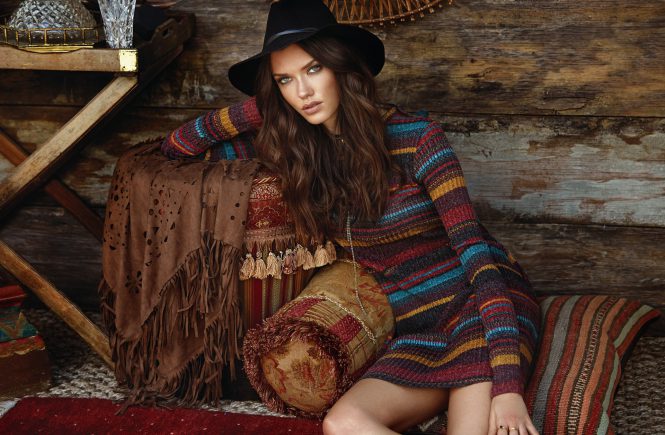Well, we’ve arrived. The notes…
It’s no secret that this is the part everyone loves. Once you become familiar with the notes below reading the top, middle, and base note ingredients will be a breeze.
Let’s get started!
AGRUMEN – A type of aldehyde characterized by a green, musky odor.
ALDEHYDE – An organic aroma compound present in many natural materials. These compounds can be synthesized artificially, like the aliphatic aldehydes used to give sparkle to Chanel No 5.
AMBER – A heavy, full-bodied, powdery, warm fragrance note that comes from the Baltic amber tree.
AMBERGRIS – A sperm whale secretion with a sweet, woody odor that is usually reproduced synthetically. It is one of one of six most expensive perfume ingredients in the world.
AMBRETTE – The oil obtained from hibiscus seeds (aka ambrette seeds) that have a musk-like odor. It is commonly used as a substitute for true musk derived from deer.
AMYRIS – A white-flowering bush or tree found in Haiti and South America. Often used as a less-expensive substitute for sandalwood.
BALSAMS – Sticky, resinous materials that from trees or shrubs that have a sweet-woody odor as is associated with well-seasoned, non-coniferous woods such as maple.
BENZOIN – A balsamic resin from the Styrax tree.
BERGAMOT – The tangy oil that comes from the non-edible bergamot orange, grown mainly in Italy.
CALONE – An aroma chemical that adds a “sea breeze” or marine note to fragrances.
CASHMERAN – A synthetic aldehyde with a spicy, ambery, musky, floral odor. It is used to invoke the velvety smell or “feel” of cashmere.
CASTOREUM – An animalistic secretion from the Castor beaver used to impart a leathery aroma to a fragrance. This aroma is often reproduced synthetically.
CITRON – The fragrance note derived from the zest of this tree’s fruit. It is used to create citrus fragrance notes.
CITRUS – The uplifting slightly sour notes from fruits such as orange, lemon, lime, mandarin and bergamot which give fresh, fruity top notes used especially in Eau Fraiche, classical, and men’s colognes.
CIVET – Musk produced by a gland found at the base of the African civet cat’s tail. Pure civet is said to have a strong, disagreeable odor, but in small quantities is often used to add depth and warmth to a fragrance.
CLARY SAGE – The aroma of the oil of this herb whose scent ranges from sweet to bittersweet, with nuances of amber, hay, and tobacco.
COUMARIN – A commonly used perfume compound that smells like vanilla with grassy elements. Usually derived from the tonka bean (see below), but also found in lavender, sweetgrass, and other plants. It is used by perfumers as a base note to add warmth and depth.
EUGENOL – The powerful spicy aroma found in oils of clove and cinnamon leaf. It is also found to a smaller degree in roses, carnations, hyacinths, and violets.
FOREST BLENDS – Aromatic, woodsy-mossy notes.
FRANGIPANI – A fragrant tropical flower, also known as West Indian jasmine.
FRANKINCENSE – A gum resin from a tree found in Arabia and Eastern Africa also known as Olibanum.
GALBANUM – A gum resin that gives off a green smell.
GUAIAC WOOD – A resinous South American tree whose oil is used in perfumery.
HEDIONE – An aroma chemical that has a soft, radiant jasmine aroma.
HELIOTROPE – Flowers of the family heliotropium, which have a strong, sweet vanilla-like fragrance with undertones of almond.
HONEY – A very sweet, heavy, syrupy, fragrance note.
HYDROXYCITRONELLAL – It is a beautiful synthetic lily aromatic.
INDOLE – A chemical compound which smells floral at low concentrations, yet fecal at high concentrations.
ISO E SUPER – An aroma chemical described as a smooth, woody, amber note with a velvet-like sensation. It is used to provide fullness to a fragrance.
ISOEUGENOL –The aroma of clove found in a weaker chemical form than that of eugenol. It makes up the aroma of nutmeg oil and ylang-ylang oil.
JASMINE – A flower employed widely in perfumery. Jasmine is one of six most expensive perfume ingredients in the world.
LABDANUM – An aromatic gum from the rockrose bush. The sweet woody odor is said to mimic ambergris, and can also be used to impart a leather note.
LEAFY – One of the many variations of the green note.
LEATHER – A fragrance type that resembling the sweet, pungent smokiness characteristic of the ingredients used in the tanning process of leathers.
MONOI – Gardenia (tiare) petals macerated in coconut oil. It is sometimes called Monoi de Tahiti.
MOSSY – Fragrances with earthy, aromatic forest scents.
MUGUET – French for Lily of the Valley. It is one of the three most used florals in perfumery. And unlike jasmine and rose, it is usually synthetically reproduced.
MUSK – Natural musk comes from the glands of the musk deer. It was originally derived from the musk sacs from the Asian musk deer. But the vast majority of musk produced and sold in the world today is synthetic which are called “white musk”. Natural musk is one of six most expensive perfume ingredients in the world.
MYRRH – A gum resin produced from a bush found in Arabia and Eastern Africa.
NARCIUSSUS – The white flowers of this tree are used extensively in French perfume production.
NEROLI OIL – Neroli essential oil is extracted from the fragrant blossoms of the bitter orange tree and has a beautiful aroma that appeals to men and women alike. Like the oils of rose and jasmine, neroli oil is almost a complete fragrance in itself. And it forms the heart of one of the world’s most enduring perfumes, ‘Eau de Cologne’. The Italian term for neroli is zagara.
OAKMOSS – A resinous substance exuded from lichen, which is usually found around oak trees.
OCEANIC – These modern scents use a blend of synthetic compounds to evoke natural aromas such as mountain air, ocean spray, or clean linen.
OLIBANUM – A gum resin from a tree found in Arabia and Eastern Africa more commonly known as Frankincense.
OPOPANAX – A herb that grows in the Middle East, North Africa, and the Mediterranean, also known as sweet myrrh. The resin produces a scent similar to balsam or lavender.
ORIENTAL – Fragrance family based on balsamic, exotic aromas such as vanilla, oakmoss and animal notes. These intoxicating scents are usually worn in the evening.
ORRIS – This note is derived from the iris plant. It has a flowery, heavy and woody aroma and it is one of the six most expensive perfume ingredients in the world.
OSMANTHUS – A flowering tree native to China, valued for its delicate fruity apricot aroma.
OUD/AOUD (OUDH) – Refers to wood from the Agar tree found mostly in Southeast Asia. The fragrant resin is treasured by perfumers. Oud is one of six most expensive perfume ingredients in the world.
OZONE/OZONIC – Modern synthetic aroma chemicals meant to mimic the smell of fresh air right after a thunderstorm.
PATCHOULI – A bushy shrub originally from Malaysia and India. It has a musty-sweet, spicy aroma, and is often used as a base note. It starts heavy and oriental at first, then becomes refined and earthy when dried.
ROSE – One of the main flower notes used in perfumery. Bulgarian rose is one of six most expensive perfume ingredients in the world.
ROSE DE MAI – The traditional name to Rose Absolute (rose essential oil) when produced by solvent and alcohol extraction.
SANDALWOOD – An oil from the Indian sandal tree. It is one of the oldest known perfumery ingredients, commonly used as a base note.
TONKA BEAN – An note derived from a plant native to Brazil. It has an aroma of vanilla combined with strong hints of cinnamon, cloves, and almonds. It is used as a less-expensive alternative to vanilla.
TUBEROSE – A plant with highly perfumed white flowers, resembling those of a lily.
VANILLA – A lovely warm note derived from the seed pod of the vanilla orchid. It is highly fragrant, popular, and expensive to produce.
VETIVER – A grass with heavy, fibrous roots, which are used to distill a unique oil that smells of moist earth with woody, leather, and smoky undertones. It is a very important ingredient in masculine perfumes.
YLANG YLANG – An Asian evergreen tree with fragrant flowers. And it is used in expensive floral perfumes.
Part VI – Fragrance Ingredients
Did you find this post helpful? Feel free to share on Twitter or Facebook by using the super-easy share buttons below!




